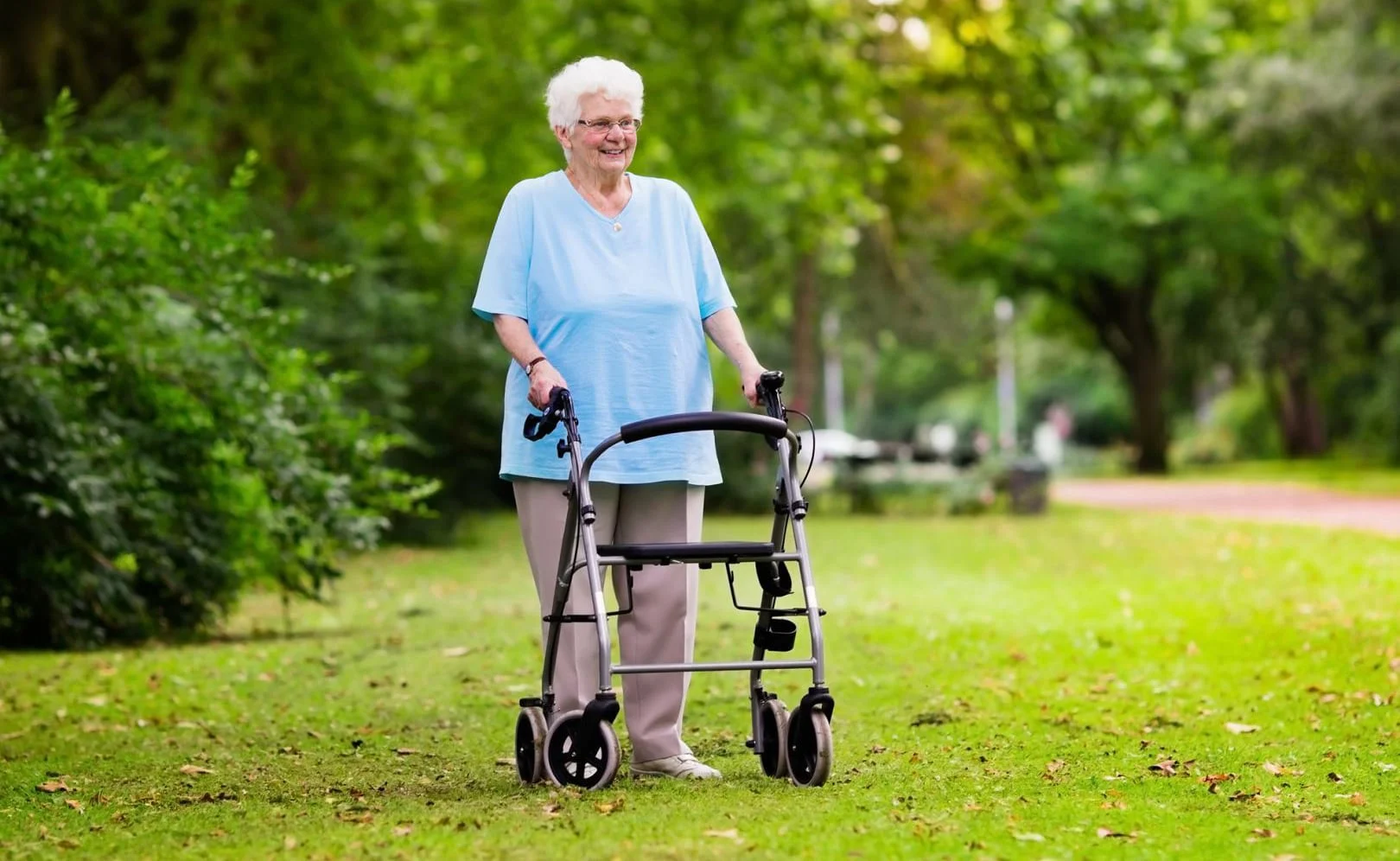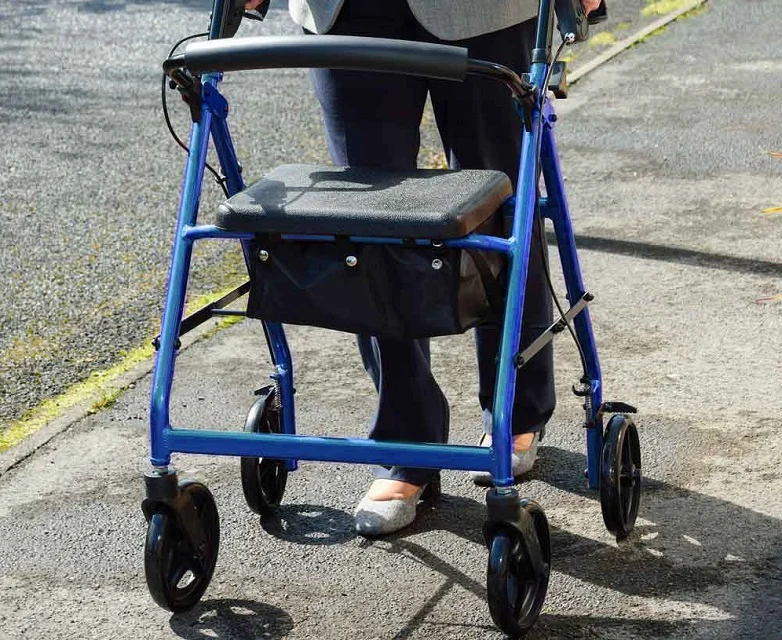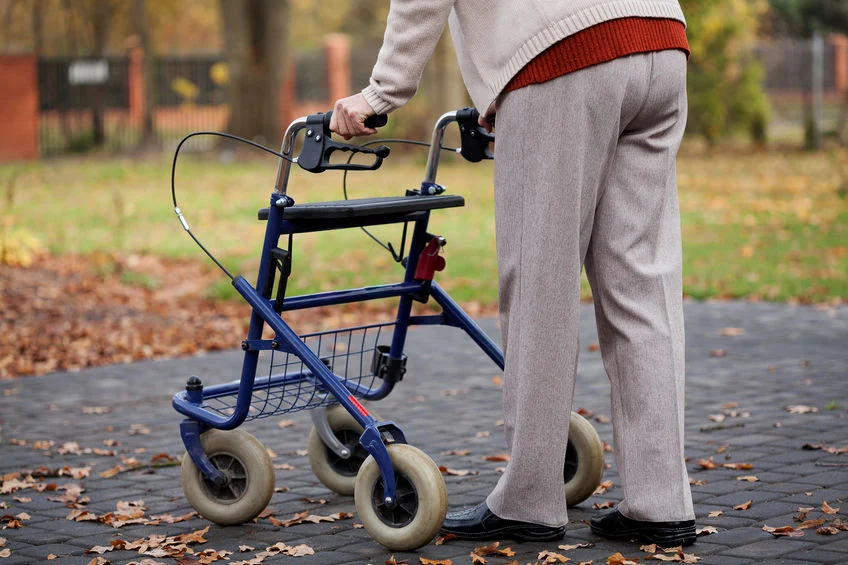Walking aids have come a long way, and today there are many types of walkers to support people with mobility issues. Walkers can play a key part in maintaining independence for seniors and anyone recovering from injuries or illness. In this guide, we’ll break down the most popular walker types, who they’re best for, and what to consider when choosing one. Our goal is to keep it informational and useful – helping you find the right walker without any sales gimmicks.
In this guide, we’re discussing the most popular types of walkers. Depending on what you need your walker for, one model might be more suitable than others. For example, the different types of walkers for seniors can vary from those that are recommended for ambulation or people recovering after surgery or long-term illness.
SeniorFitness is reader-supported. We may earn a commission through products purchased using links on this page. Learn more about our process here
TL;DR
There are many types of walkers for the elderly available to help seniors and others stay mobile – from ultra-stable standard walkers with no wheels, to speedy rollators with seats, and even knee scooters for foot injuries. Choosing the right one depends on your balance, strength, and lifestyle needs. In short, a more stable walker (no wheels or two wheels) is best if you need maximum support, while wheeled walkers (three or four wheels) offer more mobility and convenience for those who can handle them.
What are different types of walkers made for

A walker is a simple yet powerful mobility aid. It provides extra support for people who need help walking safely.
Walkers help several groups of people:
- Seniors who feel unsteady on their feet
- People recovering from surgery or illness
- Anyone with limited limb function
- Individuals at risk of falling
The right walker can restore your independence. It reduces fall risk significantly and helps you move around with confidence. Plus, it may decrease your need for additional care or support.
Find out how wide is a walker?
Pros and Cons of Using Walkers for Seniors
You might be wondering if a walker is the right solution. Would a lightweight wheelchair be a better option? There are some simple pros and cons to consider when buying any of the different types of walkers for adults. Before choosing a walker, consider these key points:
Benefits:
- Regain independence even with mobility challenges
- Dramatically reduce fall risk and injuries
- Decrease need for caregiver assistance
- Move around your home safely
Drawbacks:
- Some models are bulky to transport
- Risk of becoming over-reliant if used incorrectly
- Requires proper fitting and training
Now let’s explore the different walker types available.
Need portability? We explore how much walkers weigh here in this article
Types of Walkers: Which One Is Right for You?
Let’s delve into the different types of walkers for elderly people, or those who have mobility problems brought about by injury or illness.
Four-Wheel Walker (Rollator Walker)
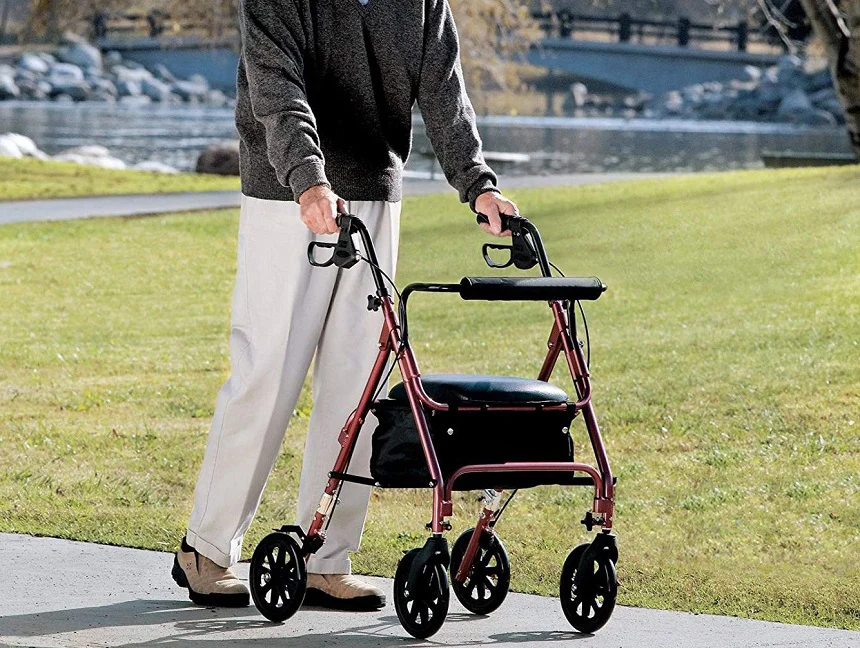
Rollators are the most popular walkers for active seniors. They feature four wheels, hand brakes, and usually a built-in seat for resting.
This design provides excellent mobility. You can walk at a natural pace without lifting or stopping. When you need a break, simply sit down on the integrated seat. Most rollators also include a storage basket underneath.
Best for: Seniors who maintain good balance but need moderate support. Perfect for those who tire easily and need frequent rest breaks.
Important: You must be able to control the speed and use hand brakes safely.
A great example is the Medline Premium Empower Rollator Walker with Seat which has a comfortable sitting position and even allows you to “step in” for easy access to counter tops. This helps people to retain both speed and independence.
Learn the difference between a Rollator and a Walker
Standard Walker (No-Wheel Walker)
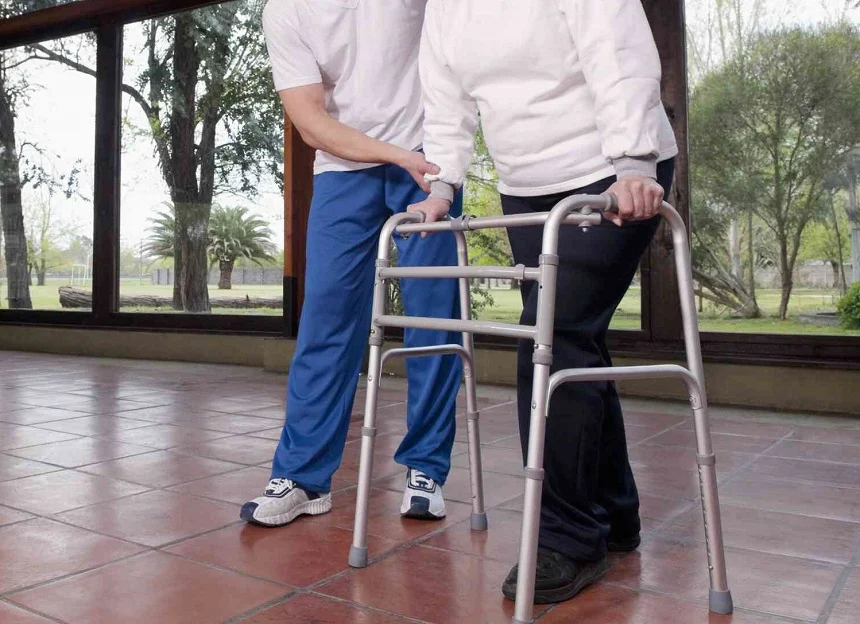
The standard walker offers maximum stability. It has four legs without wheels, providing a solid base of support.
This walker works best for people with serious balance issues. You’ll need to lift it slightly with each step, which does require some upper body strength. However, it virtually eliminates the risk of rolling forward unexpectedly.
Best for: Early rehabilitation, severe balance problems, or anyone who needs maximum support at home.
Important note: Standard walkers aren’t ideal for long distances since you must lift them repeatedly.
Two-Wheel Walkers for the Elderly
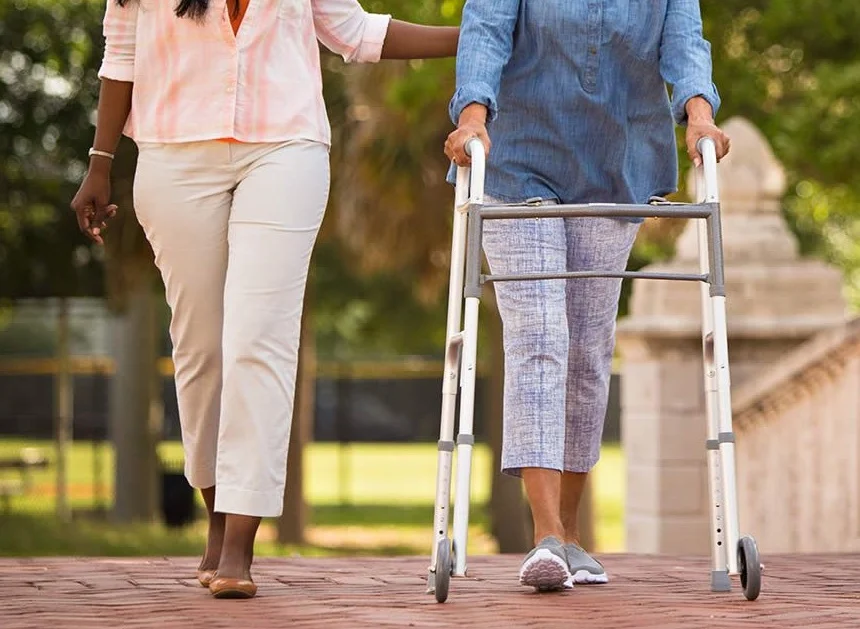
A two-wheel walker combines stability with easier movement. The front two corners have wheels, while the back legs have rubber tips.
This design lets you push forward smoothly without lifting. Meanwhile, the rear legs prevent unwanted rolling. Many users find they can stand more upright with this style, which improves posture naturally.
Best for: People who need solid support but lack the strength to lift a standard walker repeatedly. Great for flat indoor surfaces.
The Drive Medical Trigger Release Folding Walker is a great example of this and even has a trigger release to allow for a braking movement with the hands. This gives an extra level of control.
Three-Wheel Walker (Tri-Walker)
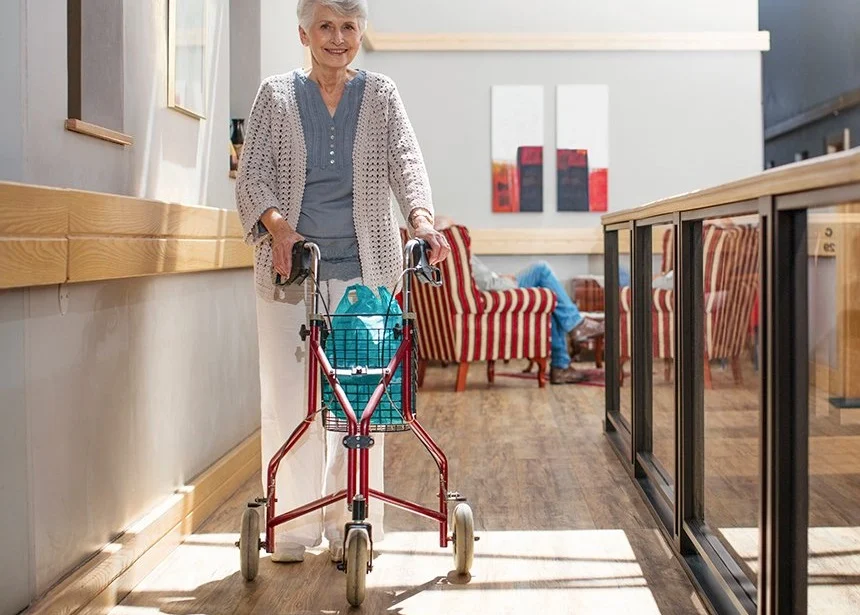
Three-wheel walkers are essentially lightweight rollators. They look like tricycles and offer excellent maneuverability.
These walkers excel in tight spaces. You can turn corners easily and navigate narrow hallways without trouble. They’re also typically lighter than four-wheel models.
However, they offer less stability than four-wheeled walkers. Most don’t include seats either.
Best for: Active seniors who need minimal support and prioritize easy turning in confined spaces.
Types of walkers for Elderly Seniors
The elderly people looking for rollators will usually want something that helps to support them to get back to how they were in their younger years, and to be able to get around the house more easily. Narrow walkers for seniors might be needed, as they can help with getting around the house, even in tight areas. They can also be a good option for transporting as they require less space.
Types of walkers for ambulation
When you are recovering from a long-term illness, you may need walkers for ambulation and the process of regaining fitness and muscle strength. It is best to start with a strong level of stability and work up to something that can provide you with more speed and freedom, like a rollator.
Knee Walker (Knee Scooter)
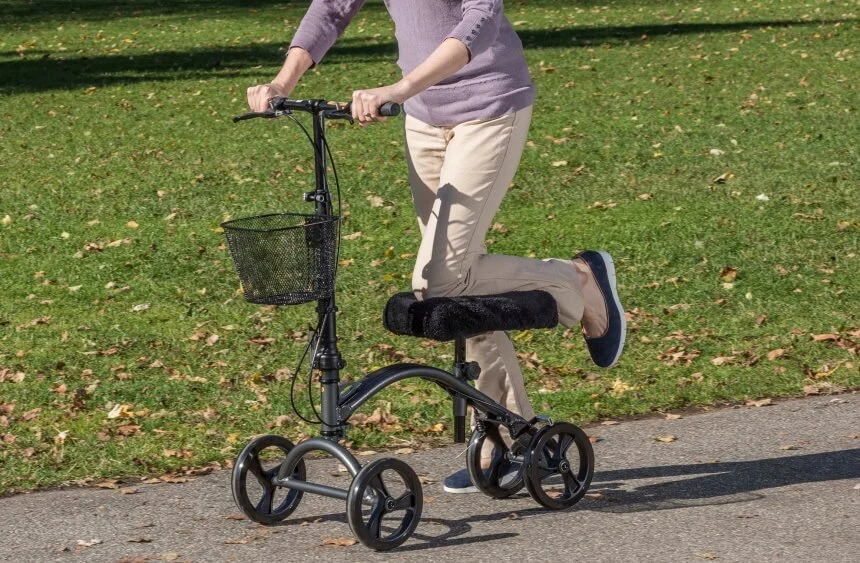
A knee walker is quite different from the other walkers: it’s designed for people who have one injured foot or ankle. Imagine a small scooter or trolley with four wheels, a handlebar, and a padded platform – that platform is where you rest your injured leg’s knee. You propel yourself with your good leg, scooting around while the bad leg is elevated on the cushioned platform. Essentially, it lets you walk without putting any weight on one foot.
Best for: Short-term recovery from foot or ankle injuries or surgeries. For example, if you had foot surgery, a knee scooter can keep you mobile during the weeks you can’t bear weight. It’s generally not aimed at seniors with balance problems (unless they also happen to have an injury) – it’s more for someone who temporarily can’t use a leg but has decent balance/coordination with the other leg.
Pros: Enables much faster movement than hopping with a walker or using crutches. It can greatly reduce strain because you’re not trying to balance on crutches (which can be tiring and risky for some). Knee walkers typically have handlebar brakes like a bicycle, so you can control speed. They often have a basket for convenience (since you need your hands on the handles). Using a knee walker is intuitive for many – you just glide along. It’s a great alternative to crutches, offering more stability and often less fatigue. People often find them fun and liberating because you can keep doing daily tasks without needing to sit all the time.
Cons: It’s a specialized device – not a general support for walking or balance. You must have one healthy leg to use it effectively. Knee walkers are also a bit bulky (some don’t fold easily) and can be awkward in very tight spaces or rough terrain. They don’t do well on stairs at all – you would have to stop and use a different method for stairs. Additionally, you need good balance on your one leg; if a senior already has balance issues, a knee walker could be tricky. They are meant for temporary use; once the foot/ankle heals, you’d transition off the knee scooter.
Upright Walker (Forearm Support Walker)

In recent years, upright walkers have gained popularity, especially among seniors who want to avoid hunching over. An upright walker (sometimes called a forearm walker or platform walker) is essentially a taller rollator with forearm rests. Instead of traditional low handles that make you bend your elbows at your waist, an upright walker has handles or platforms raised to about elbow or forearm height. The user stands inside the walker with a much straighter posture, resting their forearms on the supports and holding vertical grips.
Best for: People who have back pain or posture issues with standard walkers, or those with limited grip strength. It’s also useful for taller individuals who find regular walkers too short (even when adjusted). For example, a senior with severe arthritis might find an upright walker more comfortable because they can lean on their forearms instead of putting pressure on their wrists/hands. Also, someone who tends to lean forward too much on a standard walker might benefit from the design that encourages standing up straight trualta.com.
Pros: The main benefit is better posture and reduced strain. By supporting the forearms, upright walkers let you walk without stooping. Users often report less pressure on their lower back and shoulders. Standing more upright can also improve one’s field of view and balance (you’re looking forward, not down at the ground as much). Upright walkers usually come with all the perks of a four-wheel rollator – brakes, a seat, basket, etc. – so you’re not losing any functionality. They provide a lot of support because you can literally lean some body weight onto the forearm platforms, which can off-load your legs a bit. Studies have shown that forearm-support walkers can lead to a more upright posture and even improved walking efficiency for people who were already using rollators physio-pedia.com.
Cons: They tend to be heavier and a bit more cumbersome due to the extra frame for the arm supports. Upright walkers can be harder to turn in tight spaces (they are often slightly larger frames to ensure stability). They also require adjustment to fit the person just right – too low or too high can defeat the purpose. Not everyone likes the feeling of the forearm supports; some may find it awkward at first. Additionally, upright walkers can be more expensive than standard rollators. If a person is very short, some models might not adjust down enough for them, ironically. And like any rollator, if the user has very poor balance or cognition (to remember to use brakes), there’s still a risk of falls if used improperly.
See the Best Upright Walkers for Seniors in our Article that compares the market options
Hemi Walker (Side Walker)

A hemi walker looks a bit like half of a standard walker. It’s designed for one-handed use. This walker has four leg points like a regular walker, but it’s configured to be used on one side of the body. You could think of it as a wide-base cane that provides much more support. Hemi walkers are often recommended for individuals who have had a stroke or anyone who has one arm that is strong and one that either can’t grip or bear weight (because of paralysis, injury, etc.)tula.nyc.
Best for: Those with limited or no use of one arm/hand who still need a walker’s level of support. For example, a right-handed person who cannot use their left arm can use a hemi walker on their right side to support the weight that a full walker would normally handle with two arms. Another scenario: an elderly person with a fractured shoulder or wrist on one side might temporarily use a hemi walker on the other side instead of a full walker.
Pros: It provides more stability than a quad cane because it has a larger, walker-like base. A hemi walker can usually fold flat, making it convenient. It’s lighter than a full walker. For someone who can only manage one hand, it allows them to still have support to walk. It’s often used as a stepping stone in rehab – for instance, moving from a regular walker to a cane, a hemi walker can be the intermediate step.
Cons: It’s not as stable as using a walker with both hands. The support is one-sided, so balance has to be pretty decent on the unsupported side. It also has a bit of a learning curve to use effectively (coordination in moving it with the appropriate leg, etc.). Hemi walkers are somewhat niche; not every store carries them, though they are available through medical suppliers and online. If a person’s condition improves, they might transition off the hemi walker relatively quickly (so it can be a short-term tool in some cases).
In addition to the main types above, there are a few other variations and terms you might encounter. For completeness: platform attachment walkers (these are standard or two-wheel walkers with an added platform to rest an arm if someone can’t grip – similar concept to an upright walker’s support, often used in orthopedic rehab). There are all-terrain walkers/rollators with big wheels for outdoor enthusiasts. Bariatric walkers refer to any walker built with extra strength and width for heavier users (always check the weight capacity; some walkers support 300 lbs, others 500+ lbs for bariatric models). And of course, most walkers for seniors are folding walkers – the ability to fold in half is common in standard, two-wheel, and rollator designs, which helps with storage and travel.
Types of Walkers for elderly with seats
A walker with a seat is not a wheelchair. If you’re looking for an electric wheelchair then this is a different product. A seat can help if you need some assistance or to stop for a rest. There are many rollator walkers with seats attached, and these can give you the option to take a rest. The seat can also come in very handy for waiting in line, for example, and times when it can be a strain to be on your feet for long spells.

How to Choose the Right Type of Walkers for Your Needs
Selecting the perfect walker depends on several factors. Let’s break down the key considerations:
Consider Your Balance and Mobility Level
First, assess your stability honestly. Do you feel unsteady even standing still? If yes, start with a standard or two-wheel walker for maximum support.
However, if you’re fairly steady and just need moderate assistance, a rollator gives you more freedom and speed.
Think About Your Endurance
Do you get tired easily? If so, a walker with a seat becomes essential. Rollators let you rest whenever needed, which is crucial for people with conditions like COPD or heart issues.
For short walks around the house, a seat might not be necessary.
Evaluate Your Environment
Where will you use your walker most? In tight indoor spaces, a narrow three-wheel walker or standard walker maneuvers better through doorways.
For outdoor use or longer distances, choose a four-wheel rollator. Models with larger wheels handle uneven surfaces more smoothly.
Assess Your Upper Body Strength
Can you lift and move the walker comfortably? Standard walkers require arm strength to lift repeatedly. If that’s difficult, opt for a wheeled walker instead.
Conversely, if you lean heavily and can’t control a rolling walker, stick with a non-wheeled or two-wheel model for safety.
Check Weight Capacity
Always verify the weight rating. Each walker has a maximum capacity. Heavier individuals should specifically look for bariatric-rated walkers for safety and durability.
Consider Special Circumstances
Do you have one-sided weakness from a stroke? A hemi walker might work better than a standard two-handed model.
Recovering from foot or ankle surgery? A knee walker could be your best temporary solution.
Factor in Portability Needs
Do you travel frequently or transport your walker often? Look for folding models. Many standard, two-wheel walkers, and rollators fold down for easy car travel.
Pro tip: Always consult your doctor or physical therapist before making a final decision. They can help ensure proper fit and teach you correct usage techniques.
Find Out How Much a Walker Would Cost
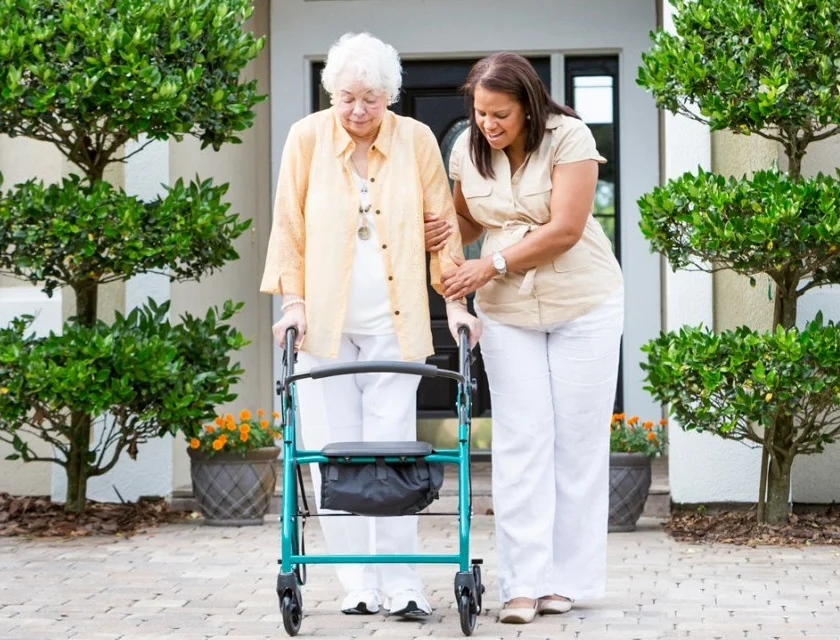
Types of Walkers for Seniors
Getting the right type of walker may not be as simple as it first seems, but it’s worth the effort. The best types of walkers for you or your loved one depend on factors like how much support is needed, where it will be used, and personal preferences. A timid 85-year-old recovering from a hip fracture might start with a standard walker for maximum stability. A go-getter senior who just gets a bit winded might love a rollator with a seat so they can stroll the block and rest as needed. Others might find their freedom with a nifty knee scooter or an upright walker that eases back pain.
No matter which style you choose, the goal is the same: to maintain mobility and independence safely. The right walker can vastly improve day-to-day life – allowing someone to move around their home, go shopping, or enjoy a walk in the park with far less fear of falling. It can literally be a life-changing aid.
Always make sure to set up and adjust the walker correctly (handles at the right height, etc.), and take a bit of time to practice using it. If possible, get a professional (like a physical therapist) to give pointers – this can build confidence and ensure it’s used effectivelymedcell.org. And don’t forget, using a walker is not a sign of giving up; it’s a tool to keep you active. As we like to tell our readers: use your mobility aid with pride – it’s helping you stay independent and safe.
At whatever age and whatever mobility challenge, there’s likely a walker out there to fit your needs. We hope this updated guide gave you helpful insight into the many types of walkers available. With knowledge in hand, you can pick the right walker and step into safer, easier mobility.

Common Questions About Walker Types and Usage
Q1: What are the different types of walking aids?
A: Walking aids range from simple canes to more supportive devices like crutches, walkers, and rollators. A cane is a single stick used for mild balance assistance. Crutches (underarm or forearm types) help take weight off one leg. Walkers (the focus of this article) provide a wide four-point support and are ideal for those needing significant stability. Rollators are walkers with wheels and typically a seat, used by people who can walk but need a bit of support and a rest option. In summary, there are many types of walking aids, and each offers a different level of support – canes for light help, walkers for maximum stability, and rollators for a balance of support and mobility.
Q2: What is the difference between a walker and a rollator?
A: A walker usually refers to a standard frame with either no wheels or two wheels. You typically lift or push it forward a short distance, then step to it. It’s very stable and is meant to bear a good amount of your weight. A rollator is essentially a walker with four wheels – it rolls smoothly and often includes brakes, a seat, and other featurestrualta.com. You do not lift a rollator when walking; you push it like a cart. The trade-off is that a rollator requires more control (you must be able to manage the speed and use the hand brakes) and it won’t support as much leaning weight as a stationary walker since it can roll away if not properly used. In short, walkers = more stable, slower; rollators = more mobile, convenient (with seat), but need better balance and caution.
Q3: Which type of walker is best for seniors with balance problems?
A: For significant balance issues, a standard walker or a two-wheel walker is usually best. These provide continuous contact with the ground (the standard walker especially) and won’t move unless the user deliberately moves themoakstreethealth.com. They act like an extension of your arms to support you as you step. A senior who is very unsteady will appreciate the sturdy support of these types. A rollator (four-wheel walker) is less stable in comparison – it’s better suited for someone whose balance is only mildly impaired and who just needs a light support for confidence. Always match the walker to the user’s balance ability: if in doubt, err on the side of more stability. A physical therapist can help test balance and recommend the safest option.
Q4: Do all walkers for the elderly have seats?
A: No, not all walkers come with seats. In fact, most traditional walkers do not have a seat. The only walkers with built-in seats are rollators (three-wheel or four-wheel rollators). Four-wheel rollators almost always have a seatoakstreethealth.com, whereas three-wheel rollators generally do not (they prioritize a slim design). Standard walkers and two-wheeled walkers do not have a seat – if the user needs to sit, they would have to find a chair or upgrade to a rollator. The seat is useful for those who can walk but need periodic rests. If an elderly person finds they have to sit down often when walking even short distances, a rollator with a seat could be a great solution. If they only walk around the house from one chair to another, a seat on the walker might be unnecessary.
Q5: Are three-wheel walkers safe for seniors?
A: Three-wheel walkers (tri-walkers) can be safe for seniors, but they are intended for individuals who have a relatively good sense of balance and just need mild support. They are very maneuverable and lightweight, which seniors appreciate, and they do provide more stability than a cane. However, because they have a triangular base, they are a bit less stable than four-wheel walkersoakstreethealth.com. A senior using a three-wheel walker should be able to walk decently on their own – the walker is there for a little extra balance and to carry things in its pouch. They should also practice using the hand brake (if provided) to ensure they can control it on slopes. For a senior who is quite unsteady or tends to lean heavily on their walker, a three-wheel type might feel wobbly. In such cases, a four-wheel rollator or a two-wheel walker could be safer. So, three-wheel walkers are safe when matched with the right user. Many active seniors love them because they’re easier to lift and turn.
References
Mayo Clinic Staff. “Tips for Choosing and Using Walkers.” MayoClinic.org, Aug 15, 2023. This article explains different walker types (standard, two-wheel, three-wheel, four-wheel, knee walkers) and offers advice on proper walker fit and use mayoclinic.org
Molly Burford. “How To Use a Walker: Tips and Advice.” Oak Street Health Blog, updated Oct 13, 2025. Provides an overview of walker types and practical usage tips, including definitions of standard, two-wheel, three-wheel, four-wheel, and knee walkers oakstreethealth.com
Physiopedia – Walkers. (n.d.) An academic resource detailing types of walkers (including platform/upright walkers) and considerations for prescription and use physio-pedia.com. Highlights how forearm support walkers improve posture and gait efficiency.
Lisa Blum Masterson, PT, DPT. “A Comprehensive Guide to Walkers, Rollators, and Assistive Devices.” Tula.nyc Blog, 2023. Offers insights into various walker and rollator types (including upright rollators, all-terrain rollators, hemi-walkers, etc.) from a physical therapy perspective tula.nyc
Trualta Caregiver Resources. “Rollator Walker FAQs: Caregivers’ Questions Answered.” Trualta Blog, July 14, 2025. Focuses on rollators and their features, including definitions of classic vs. three-wheel vs. upright rollators, and appropriate use cases trualta.com.
Arefin et al. “A Comparison of Mobility Assistive Devices for Elderly and Patients with Lower Limb Injury: Narrative Review.” Int. J. Aging Health Mov., May 2020. (Referenced via Physiopedia). Reviews various mobility aids and notes the increased use of walking frames; discusses user stability and device selection considerations.
American Academy of Family Physicians (AAFP). “Mobility Assistive Device Use in Older Adults.” American Family Physician, vol.103, no.12, June 2021, pp. 736-742. Emphasizes that assistive devices improve balance and reduce fall riskmedcell.org, and recommends proper evaluation and fitting by clinicians medcell.org. Provides evidence-based guidance on choosing between canes, walkers, etc.
WebMD Medical Reference. “Musculoskeletal Pain: Causes, Symptoms, Diagnosis, Treatments.” WebMD.com. (Referenced in original article for understanding musculoskeletal issues.) Explains conditions that might lead someone to need supportive devices like walkers, and general approaches to managing orthopedic pain.

